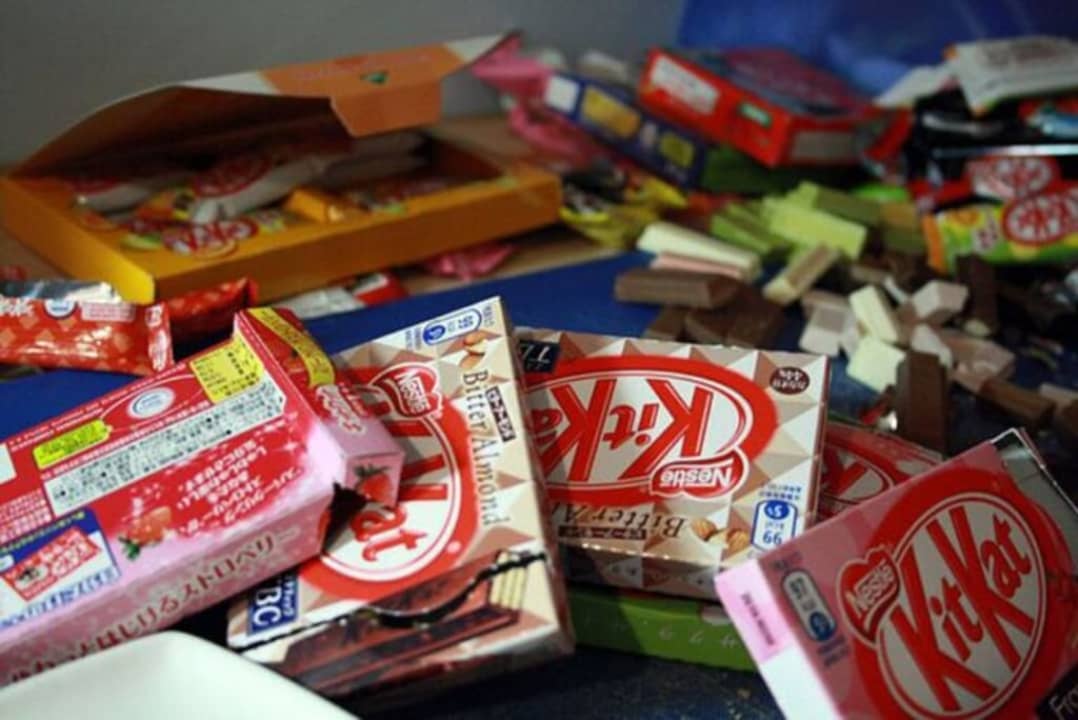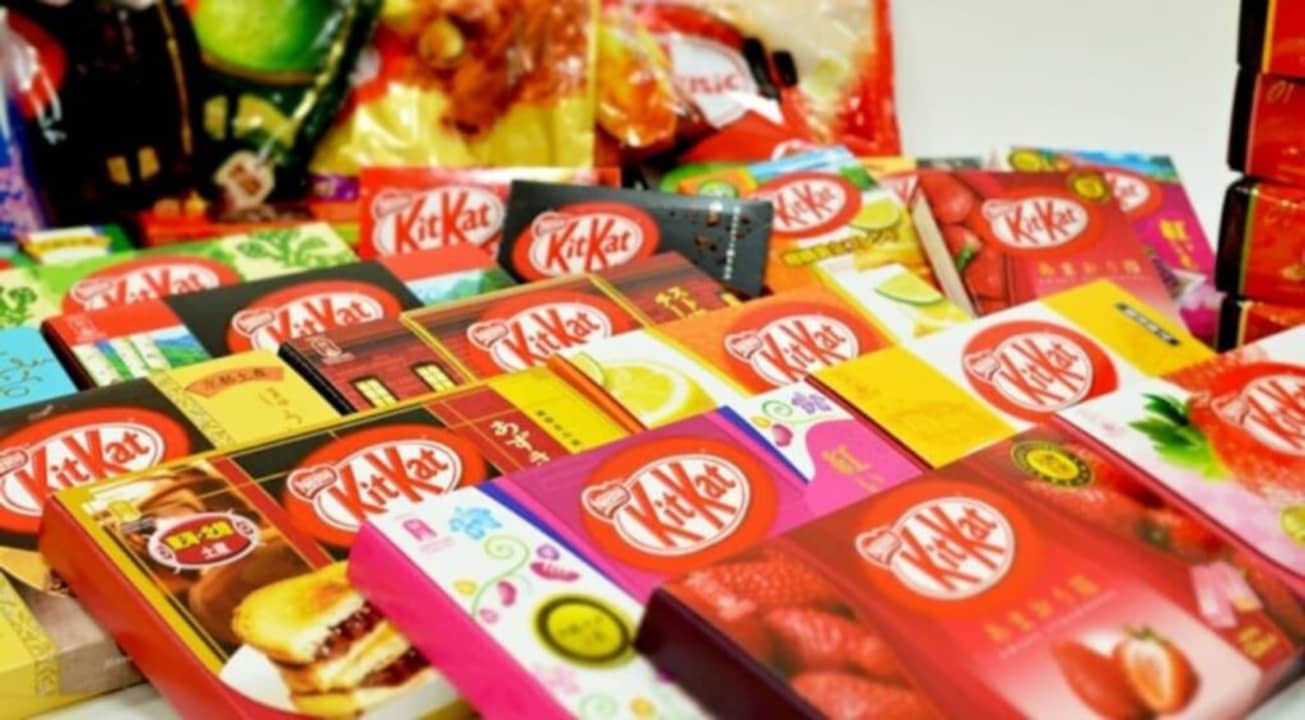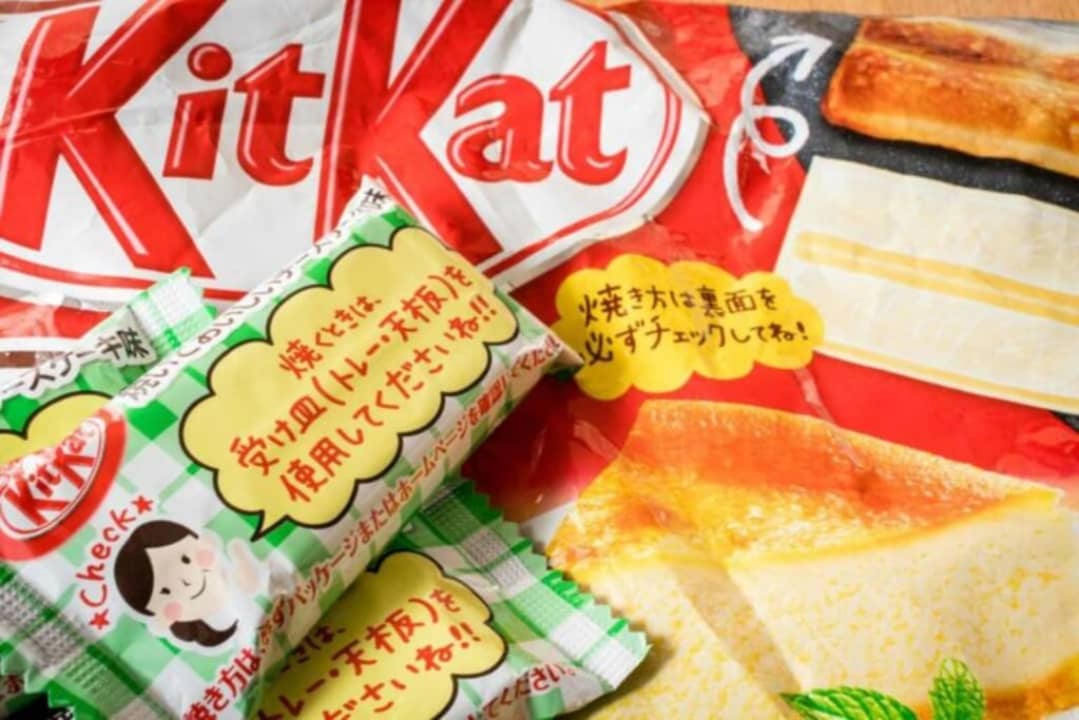Take a break, have a Kit Kat… Red potato flavor? Creme brulée flavor? Fear not: these are flavors to which they are already accustomed in Japan, the land of anime, where Kit Kat is little less than a religion. It wasn’t always so. However, one of the most incredible marketing exercises in history mixed with good luck turned them into one more of the fabulous rarities of the Japanese country. Want a rare flavor beyond the classic chocolate or white chocolate? Don’t worry: there are over three hundred (we repeat: three hundred) available that you didn’t see coming. Now, how did they get it?
Tokyo breath of fresh air
The year 1973. Japan is still ruled by Hirohito and is gradually opening up to the Western world: food and sweets from international brands enter the country through the back door, afraid of being forced out (some, like KFC, would become icons of the country). Rowntree’s, the British brand that created Smarties or After Eight (yes, there are After Eight fans, we don’t judge here), was well aware of the opportunity it had in front of it.
The company had been selling Kit Kat in the UK since August 29, 1935, when it was called, simply, Rowntree’s Chocolate Crisp (it would take two years to change the name). “Kit Kat”, in fact, comes from the 18th century: it was the name given to the meat pie created by chef Christopher Cat. It has nothing to do with it, but the name of the gastronomic creator has endured throughout history. After expanding around the world, it was time to try to land in Japan.
It was Fujiya, a chain of stores and restaurants similar to El Corte Inglés, that introduced it into its restaurants. The company is famous for two different things: its mascot, Peko-chan, a little girl with pigtails licking her upper lip, and the creation of the strawberry Christmas cake that it has been selling since 1910. However, perhaps its greatest legacy is the introduction of these four chocolate bars. No one imagined in the 1970s what Kit Kat was about to become.
Lucky charm
Meiji Seika, born in 1916, was Japan’s unbeatable chocolate brand. Its creation is Hello Panda, for example, which sells chocolate-filled bear-shaped cookies all over the world. Kit Kat had a hard time matching it. And yet, a stroke of pure luck changed everything.

Kit Kat’ is very similar to “Kitto Katsu” or, what is the same, a Japanese phrase that means “You will succeed for sure”. Thus, students started giving each other Kit Kat in 1999 as a good luck charm before an exam and its fame became popular. There was no marketing campaign involved (later on, of course): it was all good luck. Pure Kitto Katsu.
In 2009, Nestlé decided to create an unbeatable campaign: Kit Kats sent by mail to students about to enter university. Of the 600,000 students at exam time, more than half now receive one of the brand’s chocolates. The dream of any marketing company: do the minimum and receive incredible profits. In addition to this success, in 2004 they created their first regional flavor, green tea. Since then came an explosion of scents, colors and ingredients that made them even take the spot from Meiji in 2012 and 2014. It had taken forty years since its arrival, but it was worth the wait.

A thousand flavors
Over the years, Kit Kat has changed flavors every season. These come out on a very limited basis, usually never to return. For example, in 2010 the soy sauce flavor was number one (over chocolate): they are a Japanese tradition embraced not only by them, but by tourists, especially Chinese. Some even go to Japan exclusively to get their hands on the new flavors. There must be everything.
Some of the weirder flavors (and ones we’re dying to try) are apple, blueberry cheesecake, baked potato, brown sugar syrup, butter, latte, Oreo cookie ice cream, caramel macchiato McFlurry, corn, edamame, European cheese (so, in general), green peas, Hokkaido melon with mascarpone cheese, spicy chili, miso soup, coarse salt, vegetable juice, sake or wasabi. Pick your favorite. If you can.

To get an idea of Kit Kat’s success: The KitKat Chocolatory in Tokyo has a chef who exclusively creates recipes based on the chocolate bar at, shall we say, exorbitant prices, and there is always a queue. In fact, right now, if you go to Japan, you can find flavors like caramelized banana, bean paste sandwich, chocolate and strawberry tart and daifuku. But to find them all we can only wish you one thing: Kitto Katsu!


